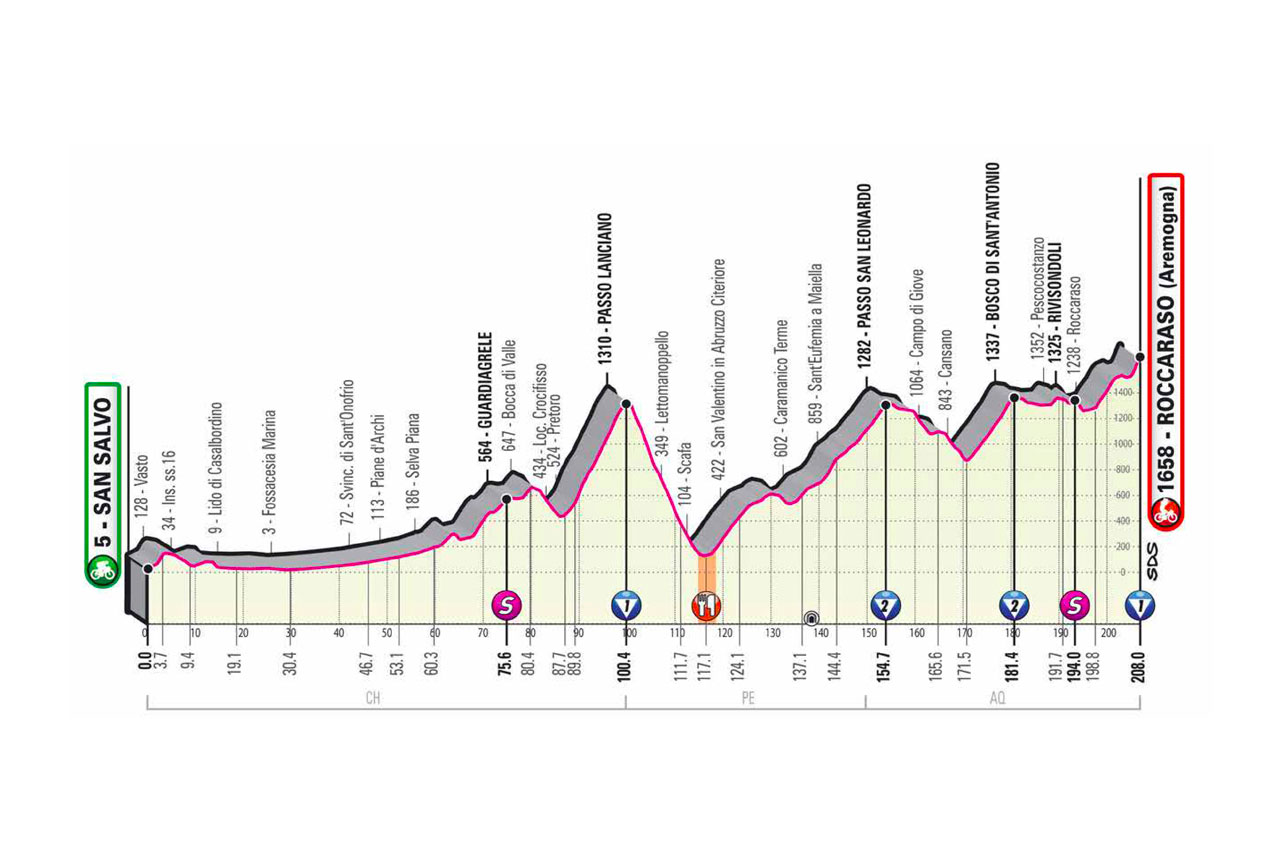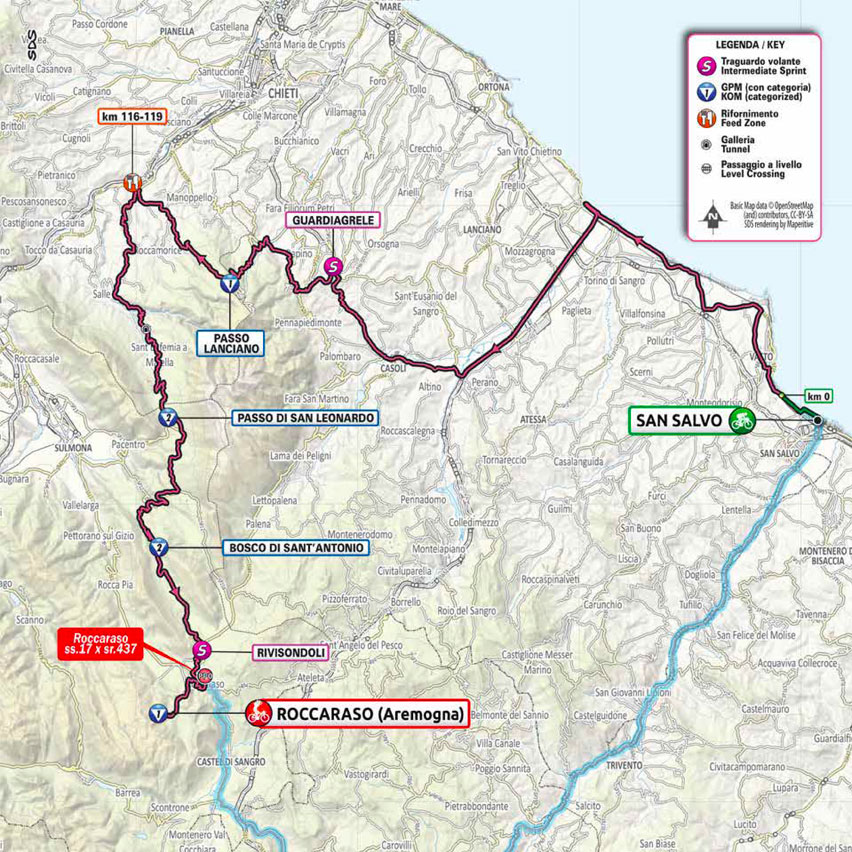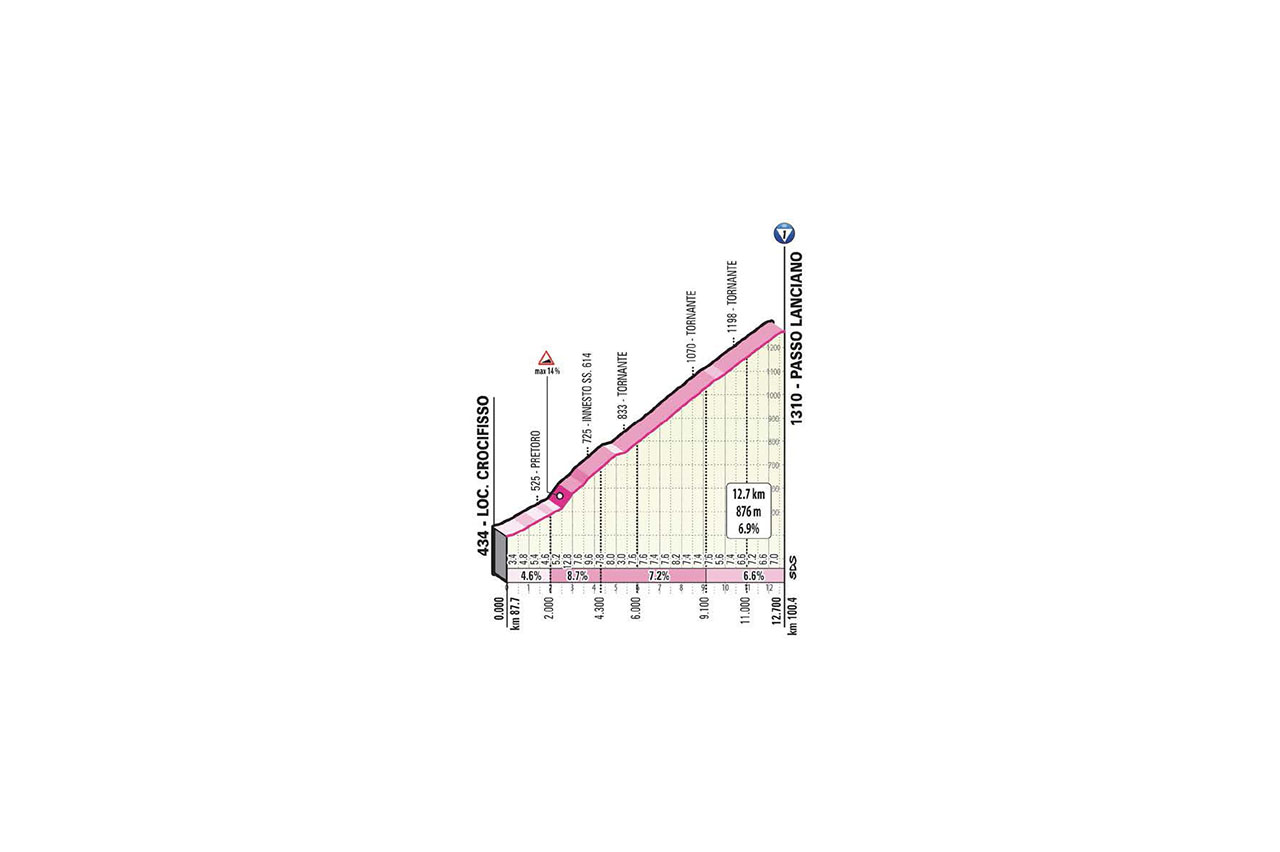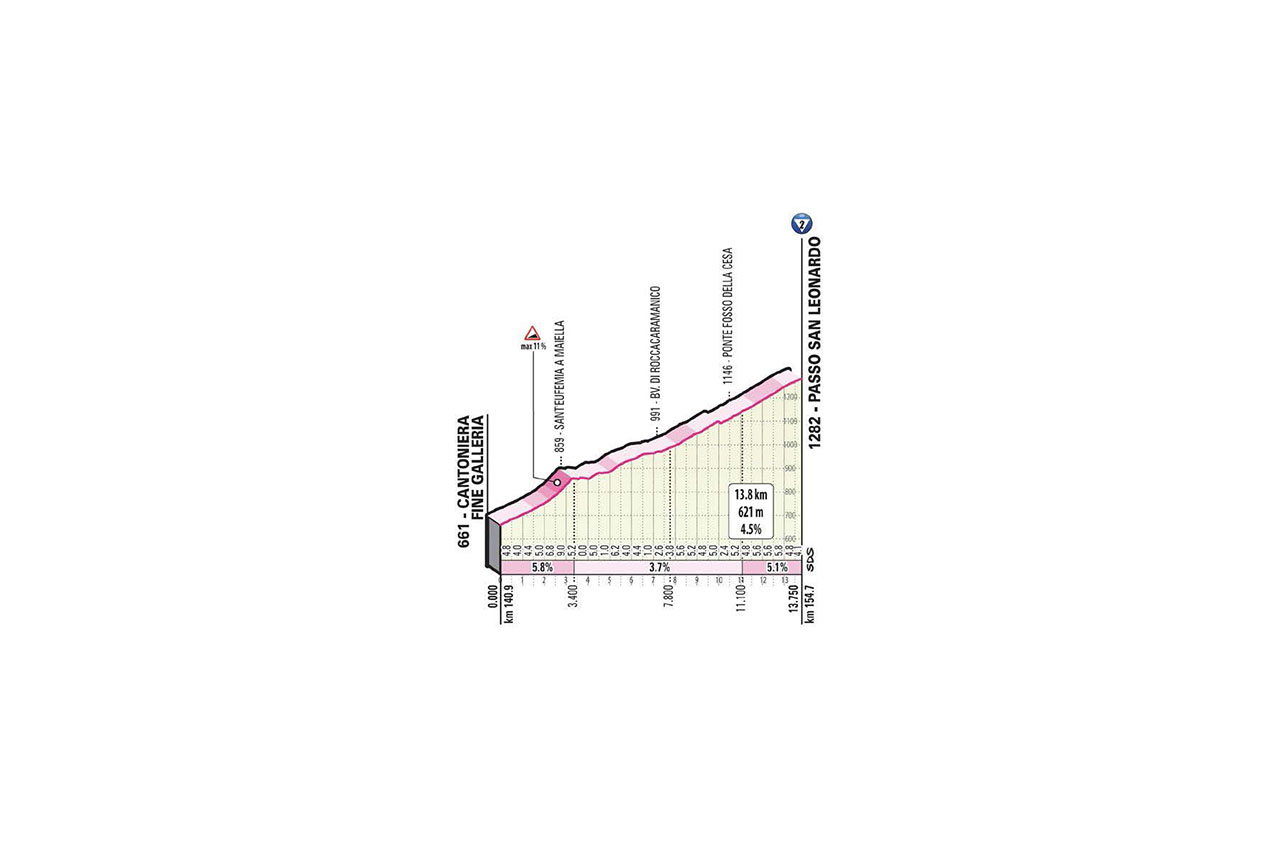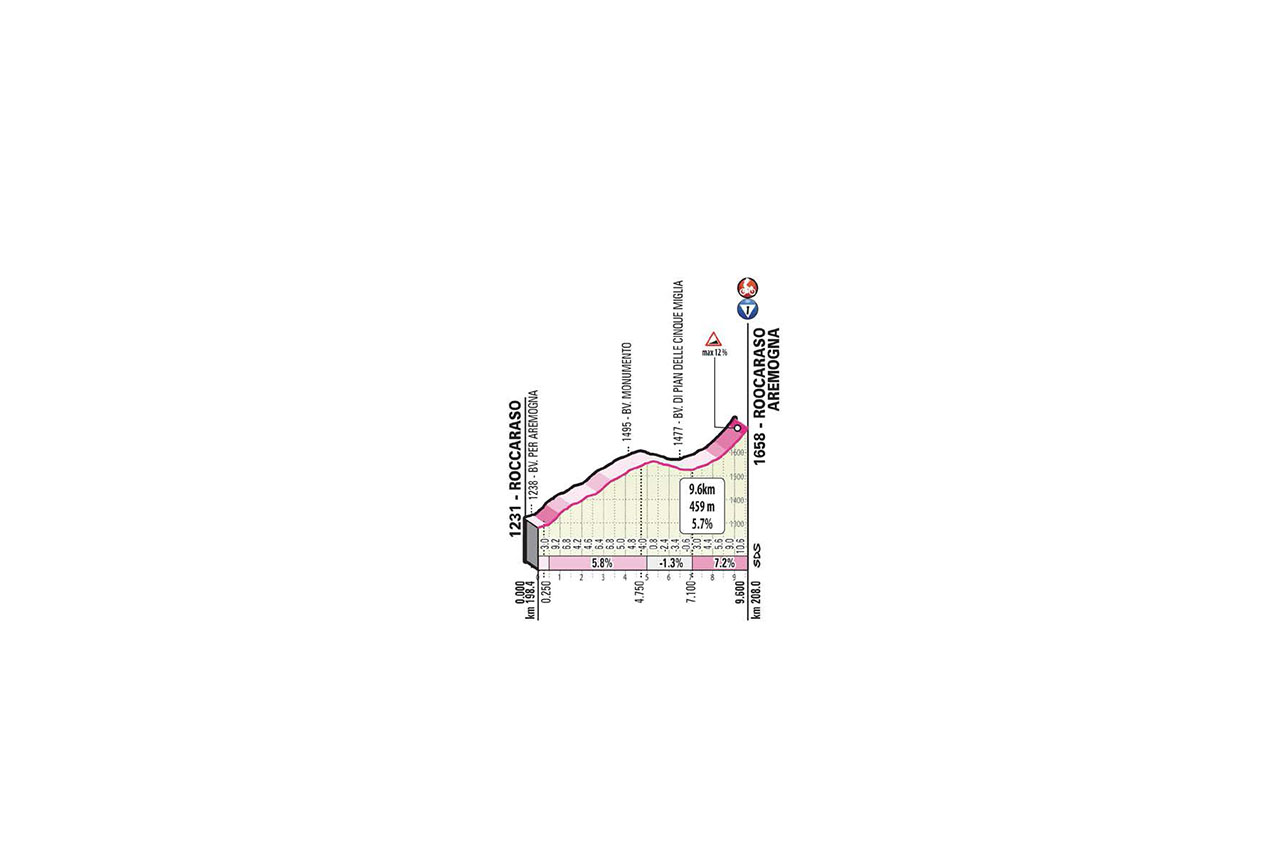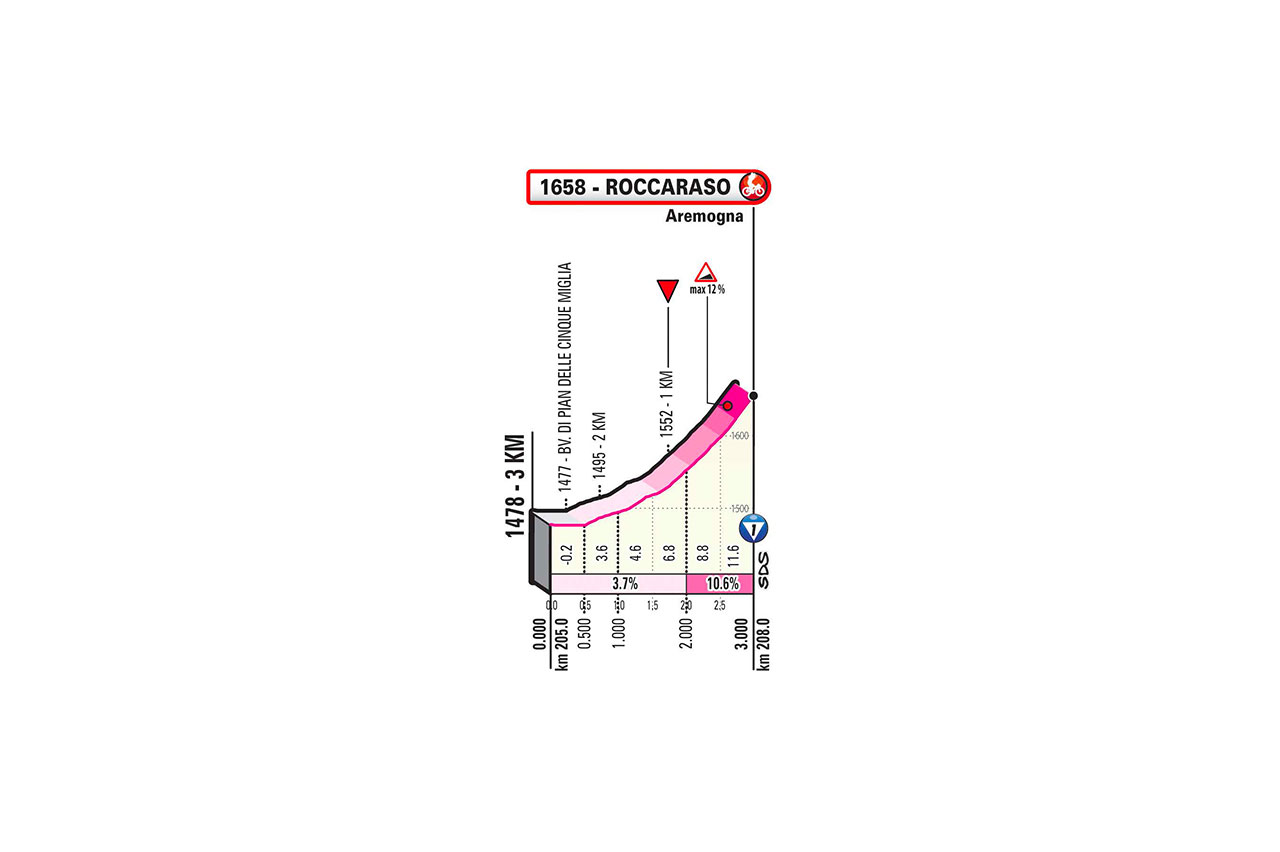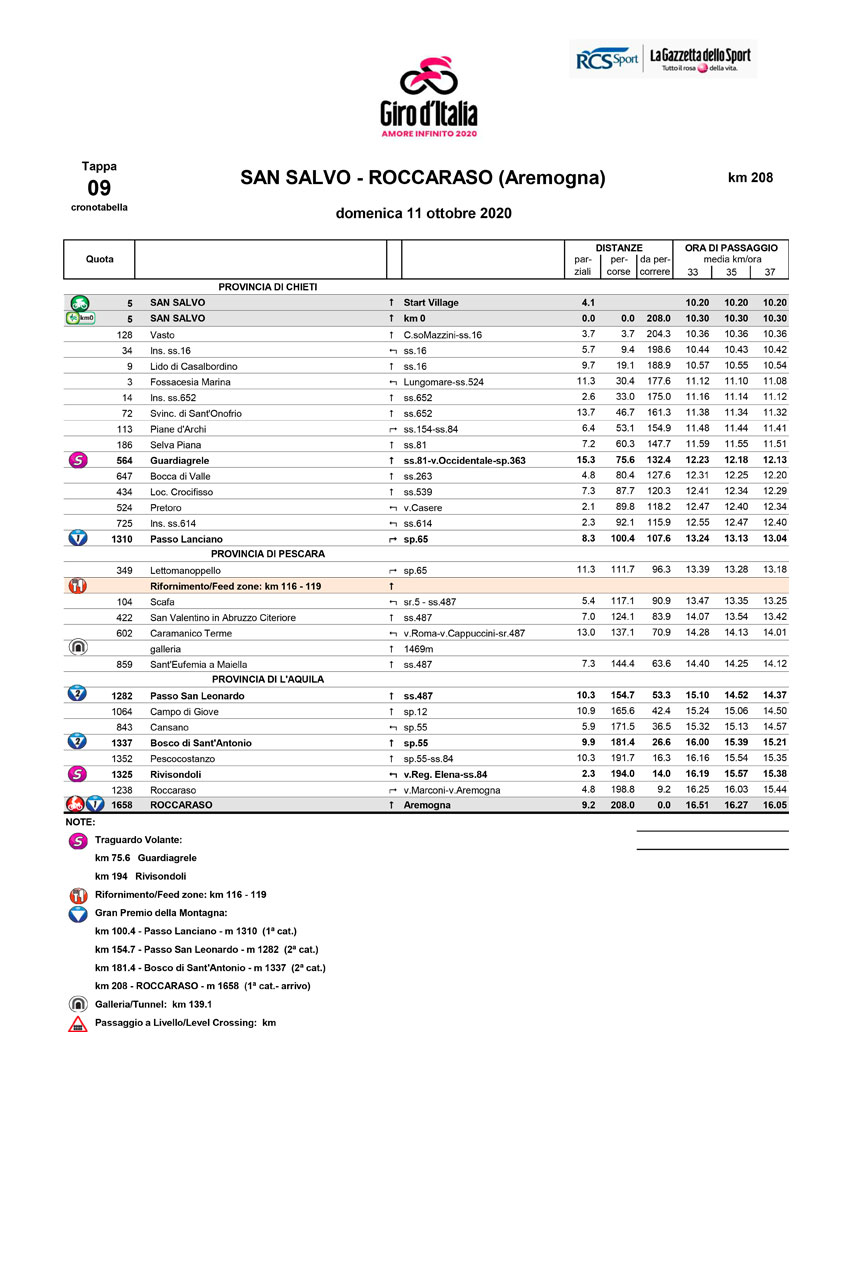profile
map
technical info
The Route
This is a queen stage across the Apennines, with a remarkable vertical altitude gain (over 4,000 m). After briefly skirting the Adriatic coast, the route heads inland, undulating continuously all the way to Guardiagrele, and then takes in long, consecutive climbs up Passo Lanciano, Passo di San Leonardo and Bosco di Sant’Antonio, with two-figure gradients over the first ascent. Past Pescocostanzo and Rivisondoli, the route reaches the foot of the closing climb in Roccaraso.
Final kilometres
The closing climb is nearly 10 km long, with an average 5.7% gradient. The ascent is manageable in the first part, and is followed by a false-flat down. The last 2 km rise at a 7% gradient, topping out at 12% over the final kilometre. The stage homes in on 6 m wide tarmac.
start / finish
climb detail
final kilometres
itinerary timetable
tourist info
Host city:
San Salvo
Overview
San Salvo is washed by the Adriatic Sea and is the southern gateway to Abruzzo. An important production and commercial center already in Roman times (I-IV century AD) was re-founded during the early Middle Ages around a Benedictine monastery, later a Cistercian abbey of Saints Vito and Salvo (X-XV centuries). As a small rural town during the eighteenth and nineteenth centuries, following the discovery of methane deposits, it began an industrialization process with the settlements of the Italian glass company (later Pilkington and now NSG) in the early sixties of the last century and of Magneti Marelli (now Denso), which went hand in hand with the growth of trade, tourism and business services. The local economy is no less supported by agriculture (orchards, olive groves and vineyards), crafts and tourism.
Blue Flag for 22 years, tourist destination for the sea and for the historical heritage of the inhabited center is part of the valuable Costa dei Trabocchi.
In 1987, on the recommendation of Censis, it became “one of the 100 municipalities of small great Italy”. John Paul II visited it on March 19, 1983, on the occasion of the day dedicated to work.
He completed the “Bike to Coast” cycle path, which will connect the entire Abruzzo coast, and which also joins the center of the city.
Food
First courses: Sagnitelle with tomato or meat sauce; cavatelli alla ventricina; Pizz and foje; sagne and chickpeas; pasta on the guitar; cavatelli alla pescatora. Dishes: pallotte cace and ove (meatballs made with mixed cheeses and pecorino with eggs and parsley, a little breadcrumbs, fried and then cooked with tomato); chicken stuffed with livers, almonds and eggs; skewers; grilled lamb; fish soup; ventricina, lummelle (capocollo) and sausages. Desserts: cicerchiata (fried balls of 00 flour, olive oil, eggs and past sugar); pizzelle (flour, eggs, sugar and olive oil); full celli (flour, olive oil, white wine, sugar and “spider” grape jam); sweet pizza (sponge cake with cream and chocolate layers wet with alchermes) and sweet and savory fiadone.
Drink
Trebbiano d’Abruzzo and Pecorino (IGP), Montepulciano d’Abruzzo (red), Cerasuolo d’Abruzzo. Liqueurs: Flavored cooked must, Limoncello
Points of interest
Gate of the earth, Civic Museum, Abbey Museum, Archaeological Island of the Cloister, Church of San Giuseppe, Archaeological Island of the Mosaic and Roman underground aqueduct, Old Fountain and Mediterranean Botanical Garden.
Roccaraso (Aremogna)
Overview
Roccaraso is the best known and best equipped ski resort in the Apennines. It is located a short distance from Rome and Naples, on the High Plateaus, between the two large protected areas of the National Parks: the historical one of Abruzzo, Lazio and Molise and that of Majella.
A long success story: for over half a year it has in fact been one of the most popular and popular tourist destinations in Italy in every season.
Roccaraso is a real paradise for snow lovers. With its new fast, modern and barrier-free lifts, it presents itself as a single large ski area that offers slopes of all kinds within an area of about 110 kilometers. Roccaraso can now boast the largest programmed snow system in Italy and the third largest in Europe.
Points of interest
- Parish Church of Santa Maria Assunta
- Hermitage of the Madonna della Portella
- Church of San Bernardino
- Church of San Rocco
- Angeloni Theater
- Memorial to the Fallen Without Cross of Monte Zurrone
Top video
Last KM
































